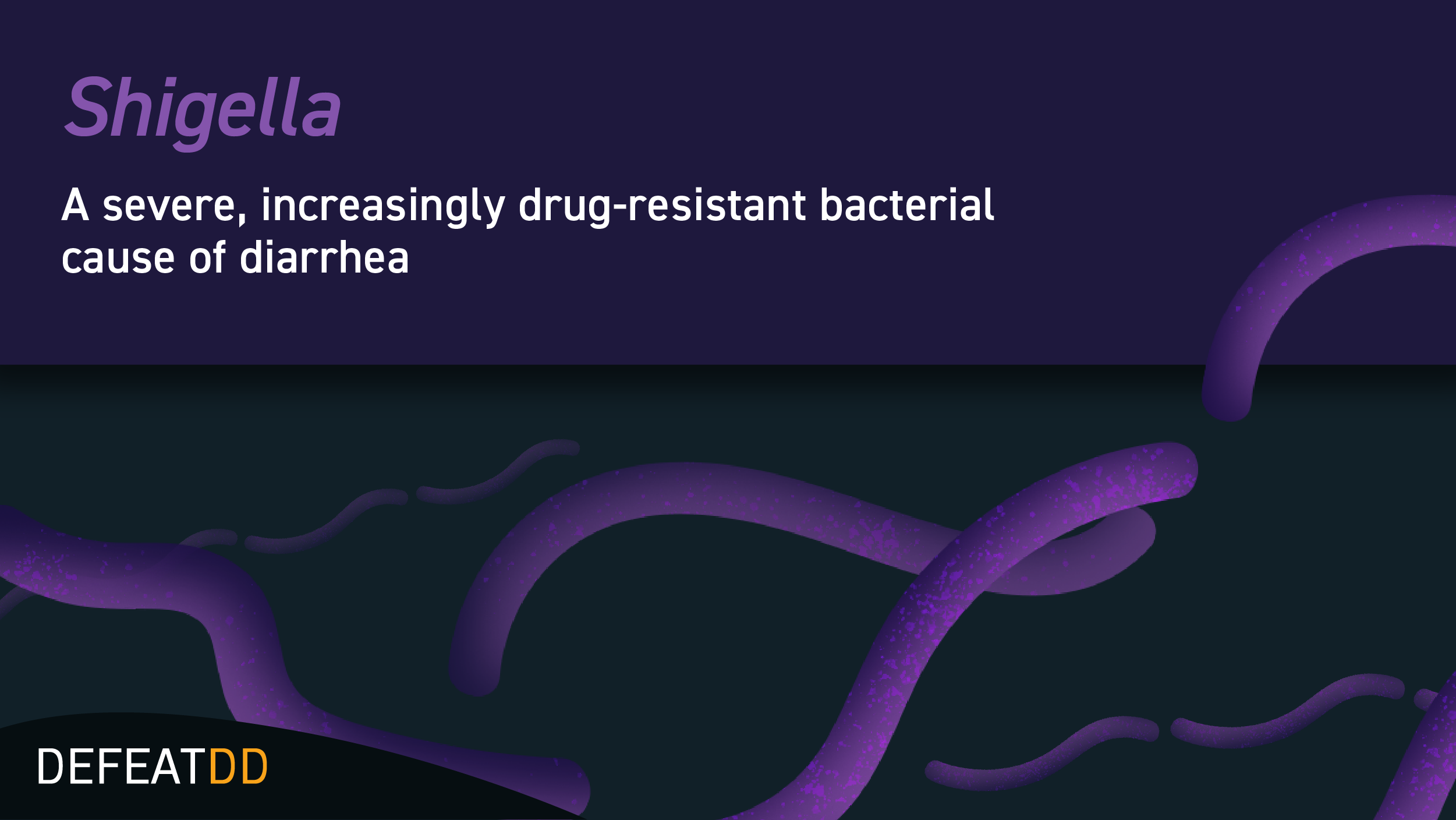
Drug resistant diarrheal disease: a journey

Drug resistance is a major global health challenge, and it continues to worsen. A problem with many causes, rising drug resistance has placed an increasing burden on global health and children are among those shouldering the consequences. How though, does drug resistance relate to diarrheal disease? Using the pathogen Shigella as an example, let’s go on a drug resistance journey:
Shigella is a leading bacterial cause of childhood diarrhea that can be transmitted through contaminated food or water. In our example, a child drinks unsafe water that contains Shigella bacteria. Without access to safe water, sanitation, and hygiene (WASH), children can be exposed to germs like Shigella. After drinking the contaminated water, the child becomes sick and begins to experience severe symptoms of diarrhea. In noticing these symptoms, the child’s caretakers may go to a local clinic to receive care. Let’s say a doctor prescribes antibiotics.
Side note: In this case, antibiotics are the correct treatment, since Shigella is a bacteria. But we should note here that inappropriate use of antibiotics to treat other causes of diarrhea, like viruses, is commonplace, and part of the reason drug resistance is growing.
Antibiotics shorten the length of illness caused by Shigella. However,antimicrobial-resistant (or drug-resistant) Shigella infections have been rising since 2016. In our example, the child’s symptoms do not resolve after taking first-line antibiotic medication. The doctors suspect that the child is sick with a drug-resistant strain of Shigella, which means that the germs are not killed and continue to grow. Often, the child may have to use a different medication, take a higher dose of antibiotics, extend the period of time taking antibiotics, or try multiple medications in combination. For these reasons, drug-resistant Shigella infections are often harder to treat, cost more to treat, and last longer, which increases the chance that it will spread to others, too.
This scenario is an unfortunate reality for many children and families around the world. As drug resistance continues to grow for Shigella and other pathogens, it is all the more urgent to prevent children from becoming sick in the first place. Improved WASH and increased vaccine uptake work in tandem to prevent antibiotic use (both appropriate and indiscriminate cases).
While there are no vaccines yet available for Shigella, PATH conducted research to understand the value proposition that details the impact of a vaccine that holds dramatic potential for reducing disease burden and stemming the tide of drug resistance. Learn more about these vaccines and other research developments on prevention and treatment innovations in diarrheal disease that can help us prioritize persistent progress against emerging threats.


